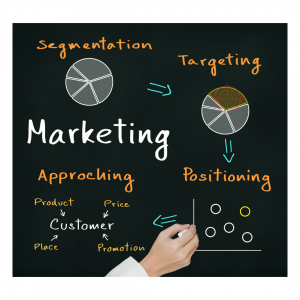Beginner’s Guide to Customer Segmentation
One of the toughest challenges businesses face is knowing how to tailor their marketing efforts to specific groups in their target audience. To build a business, push conversions and raise ROI, businesses need to focus on meeting the needs of specific sub groups of consumers rather that treating their market as a broad group of potential customers. The way to do so is through customer segmentation.
What is Customer Segmentation?
Also known as market segmentation, customer segmentation means dividing a customer base into targeted smaller groups that are similar in certain ways relevant to marketing. Dependent on the business, they may segment their audience by age, gender, interests, buying habits, location or how they respond to communications.
A business’s target audience isn’t just a homogenous mass of consumers, but actually sub groups of people who respond differently to different styles of marketing.
Slicing your marketing into different groups and getting started with customer segmentation isn’t an easy task. Here’s how you can conduct your own customer segmentation in two simple steps.
 Defining Your Business Avatars
Defining Your Business Avatars
You’ve probably heard of the popular term buying persona, which is essentially what a business avatar is. Here’s where to begin.
It’s a representation of your ideal customer, where through market research and data analysis a business can understand exactly who their target market is. It can be based on customer demographics, buying habits, location and behaviour patterns.
One size doesn’t fit all.
As you conduct your research you might discover you have a few different business avatars. This is customer segmentation, where you have different groups of people you know might buy, or do buy, your products or services.
You can check out our previous blog post, “Who is Your Business Avatar?” for more information.
The whole point of this for you to understand the different styles of marketing you can use that will directly target their needs and encourage them to make to enquire, convert or make a purchase.
Segmenting Your Audience
Here’s an example of customer segmentation based on buying history:
1. Frequent Customers
Include consumers who have bought from you a few times previously.
Obviously, these are your most loyal customers, who clearly like your products and services, so it’s safe to assume they’d like to regularly hear from you.
They might likely to hear from your more frequently than most, with all your latest news, offers and loyalty perks.
2. New Additions
This group will be people who are new to your radar, they might have just made a purchase or recently signed up to your mailing list.
As of yet they’re not loyal customers, you might want to encourage them to become regular customers, for example by offering a discount for their next purchase.
3. Occasional Buyers
Dependent on your business, this slice will probably be your largest.
It’s pretty much the remainder of your database, the ones who are not repeat visitors or new to your business.
Occasional buyers can potentially be the hardest to engage, since there’s a possibility they go to competing brands.
Perhaps offering strong incentives could encourage them to become brand advocates, through welcome back offers or reminder emails.
The Final Slice of Advice
The above model is a simple one, just to get you started.
The more personalised your marketing efforts are, the better you will be able to meet the needs of your consumers. There are endless ways you can segment your audience, it’s just whatever is right for your brand.
Want some help reaching the needs of your audience? Lucky for you we’re experts in market segmentation and driving engaging campaigns.
Contact us for a free, no obligation consultation!
E: contact@differentgravydigital.co.uk
Tel: 0161 706 0004
Why not check out our Digital Marketing Terms Glossary?
About the author:
Marie Harwood is a Digital Marketing Assistant at Different Gravy Digital, Hale, Cheshire.
Different Gravy Digital are a full service Digital Marketing Agency operating in the Hospitality & Leisure, Financial Services, Legal & Property sectors. Products and services range from; 3D & 360° Tours, Website Design & Build, Social Media, Video Production, Search Engine Optimisation (SEO), Content Creation, Email Marketing, Online Feedback / Review Systems and Paid Advertising (Google, Bing and Social Media).
Contact Details:
marie@differentgravydigital.co.uk
0161 706 000
120a Ashley Road, Hale, Altrincham, Cheshire, WA14 2UN